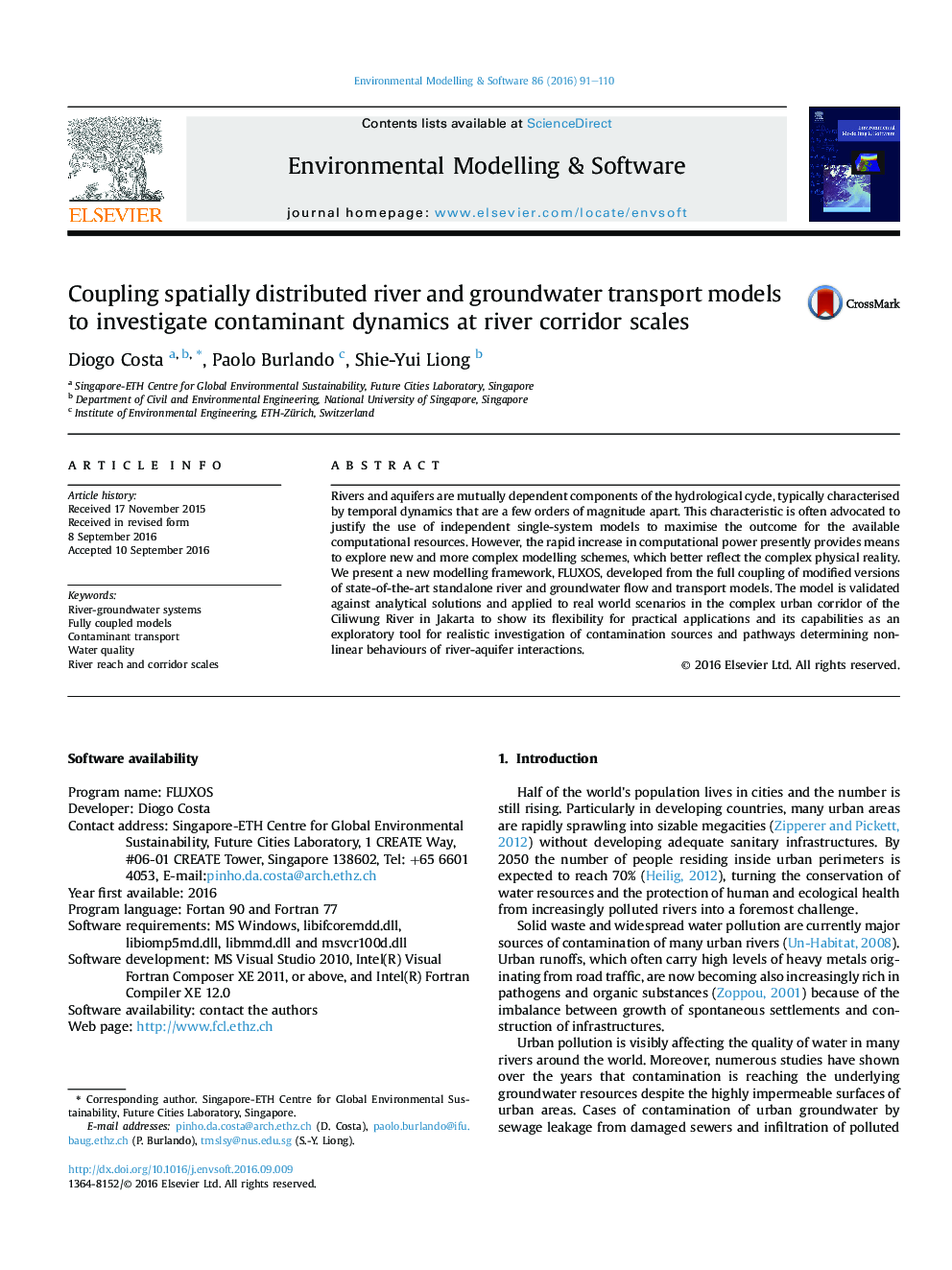| Article ID | Journal | Published Year | Pages | File Type |
|---|---|---|---|---|
| 4978303 | Environmental Modelling & Software | 2016 | 20 Pages |
Abstract
Rivers and aquifers are mutually dependent components of the hydrological cycle, typically characterised by temporal dynamics that are a few orders of magnitude apart. This characteristic is often advocated to justify the use of independent single-system models to maximise the outcome for the available computational resources. However, the rapid increase in computational power presently provides means to explore new and more complex modelling schemes, which better reflect the complex physical reality. We present a new modelling framework, FLUXOS, developed from the full coupling of modified versions of state-of-the-art standalone river and groundwater flow and transport models. The model is validated against analytical solutions and applied to real world scenarios in the complex urban corridor of the Ciliwung River in Jakarta to show its flexibility for practical applications and its capabilities as an exploratory tool for realistic investigation of contamination sources and pathways determining non-linear behaviours of river-aquifer interactions.
Keywords
Related Topics
Physical Sciences and Engineering
Computer Science
Software
Authors
Diogo Costa, Paolo Burlando, Shie-Yui Liong,
